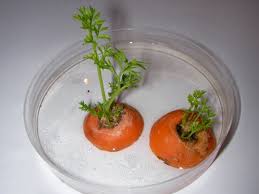In previous posts, we discussed ways to add nutrition education into various areas of the curriculum. So what does science have to do with food? Let’s explore ways we can merge science into food experiences. I hope that you will share some of your ideas too.
Science Skills Learned through Food Experiences
- Cause & Effect
- Chemistry
- Temperature
- Testing Hypothesis
- Physical Properties of Food
- Investigating the Origins of Food
- Life Science (growing foods in the garden)
- Changing Forms – liquids, gases, solids
- Predictions & Observations
Food experiences can inspire children’s curiosity, thinking and problem solving, which offers opportunities to make predictions and observations. Some experiences you plan can stimulate all the senses. Ask questions, let the children make hypothesis on how a product may change, discuss temperatures of foods cooked and uncooked, put an item in a blender discuss what it looks like before it is blended – let children discuss how it might change, blend food item and discuss the final state of the food. There are so many possibilities to incorporate science learning into food experiences.
Turnip (can use other foods)
- Show a turnip seed packet & seeds. (many children may not have ever seen a turnip)
- Show a turnip from its raw state, then show a peeled turnip. (ask children have they eaten a turnip before)
- Pass the turnip around for the children to feel & smell. (encourage discussion)
- Provide a uncooked sample & a cooked sample. (ask children how they think it will change when you cook the turnip)
- Discuss the differences in the uncooked & cooked turnip.
- To extend the lesson, have a farmer or home gardener come to talk with class about growing food.
- Have children plant a seed and make predictions on what will happen with it. As the plant grows it will provide additional opportunities for discussion and learning.
- Another food item to use is potatoes, many children have only seen them as french fries. Of course, the possibilities are unlimited on fruits and vegetables.
- Read & have an activity for “The Great Big Enormous Turnip” by Anna Award or “The Enormous Potato” by Aubrey Davis. I will post an activity on my next blog.
Apple Slice Science
https://www.education.com/activity/article/Apple_Slice_Science/


